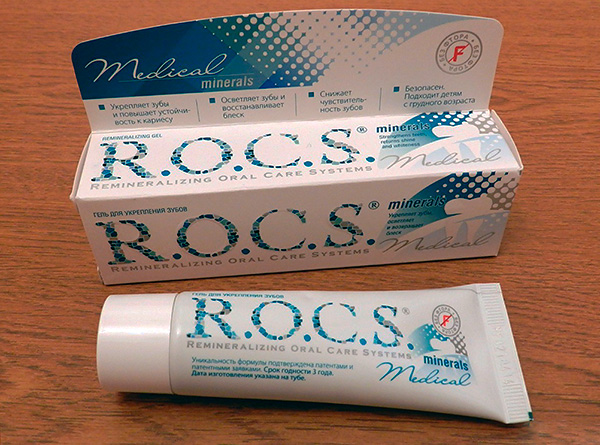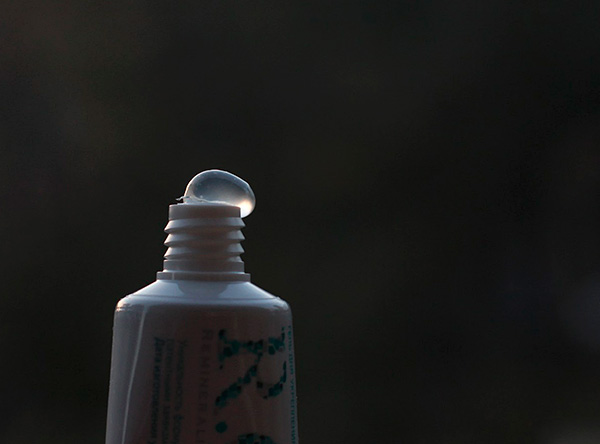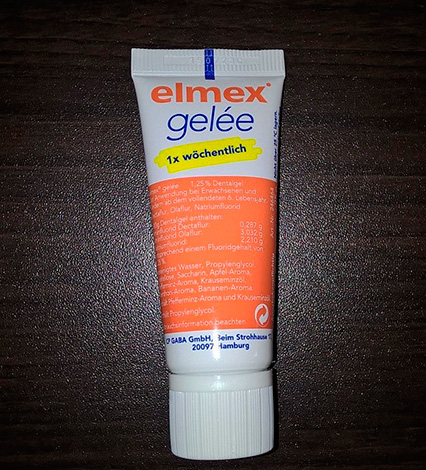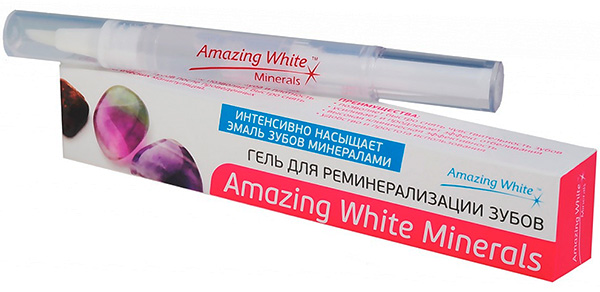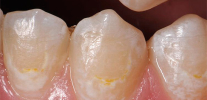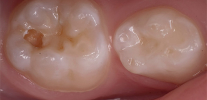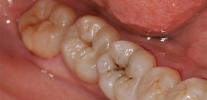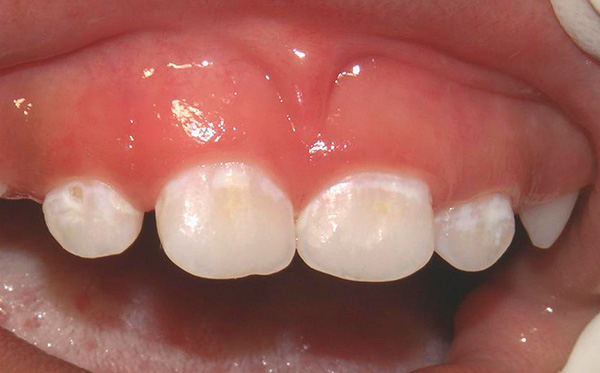
Next you will learn:
- What is the so-called caries in the stage of a white spot and what will happen next with tooth enamel if you do not pay attention to this pathology in a timely manner;
- How can you recognize the initial caries in time on your own, at its earliest stages, just standing at home in front of the mirror;
- What to do if you (or a child) are offered to treat caries in the spot stage with silvering;
- How effective is remineralizing therapy and enamel fluoridation in such cases and how quickly a positive result is achieved;
- What preparations exist today that make it possible to restore tooth enamel at initial caries at home;
- What is the treatment of caries in the stage of the spot by the method of the so-called infiltration (Icon) and why in some cases instead of this technology you will have to limit yourself to the use of a drill and the filling;
- What is important to keep in mind if you suddenly want to solve the problem of imperfections of the front teeth with spots by using veneers ...
Like other diseases, caries has its own characteristic initial stage - at this stage, the pathological process is still poorly expressed and destructive phenomena are not very noticeable. The initial stage of caries is the so-called focal demineralization of tooth enamel, or, in other words, the stage of the spot (in this case, refer to a white or chalky spot - it really looks bright, as it is not yet pigmented).
Demineralization of tooth enamel occurs primarily under the influence of organic acids secreted by plaque bacteria, and is associated with active loss of calcium by crystals of hydroxy- and fluoroapatite, the main structural components of enamel.
On a note
During caries in the stage of a white spot due to destructive processes, tooth enamel in places loses its natural transparency, becomes dull, which is visually just perceived as the appearance of strange white spots on the tooth. The appearance of such spots should be taken seriously.
The photo below shows an example of caries in the stage of a white spot in the cervical area of primary teeth:
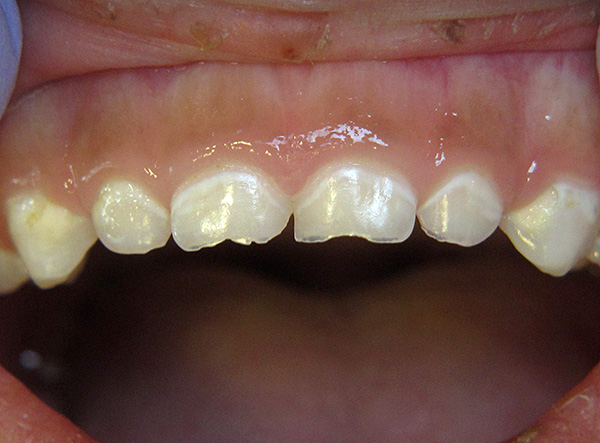
The following shows how an adult might look when wearing braces:
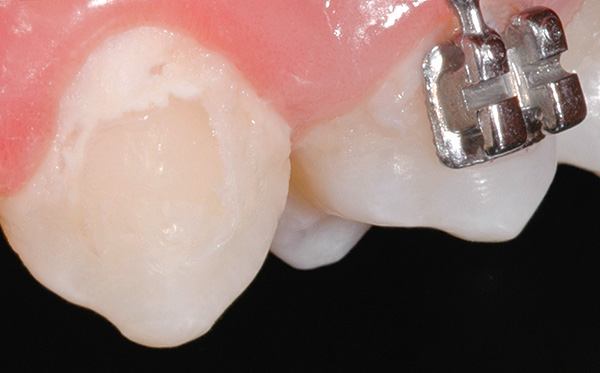
And what will happen if caries is not treated at this stage?
Actually, for many people the first thought is something like this: if nothing hurts and, in principle, doesn’t really spoil the appearance, then why not leave everything as it is, because I don’t feel like running to the dentist once again. Maybe everything will resolve by itself ...
However, it should be borne in mind that caries in the stage of a white spot is only barely noticeable at the initial stage - white spots usually pigment quite quickly, become dark (from yellow to black) and deepen.
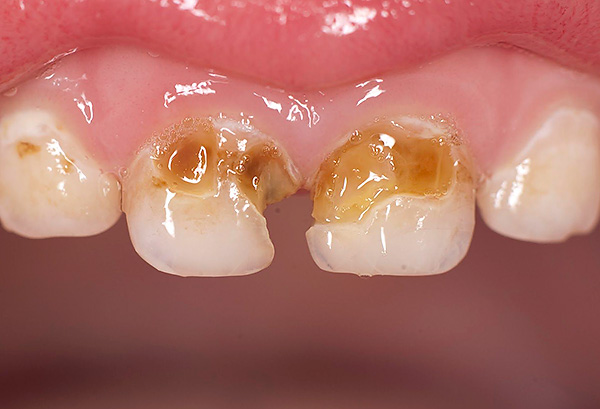
In addition, the treatment of caries in the stage of a white or chalky spot in some cases can be carried out without a drill at all, since the process of initial enamel demineralization is largely reversible.
What you can expect in the dentist’s office during the treatment of initial caries, as well as what you yourself can do at home to eliminate the effects of enamel demineralization - we will talk about all this in more detail ...
How to recognize a problem in time
Independently recognizing caries in the stage of a white spot is usually easiest on the front group of teeth (from canine to canine), more difficult on molars, especially if cervical caries is outlined.
The following photo shows an example of caries in the spot stage on the upper incisors:
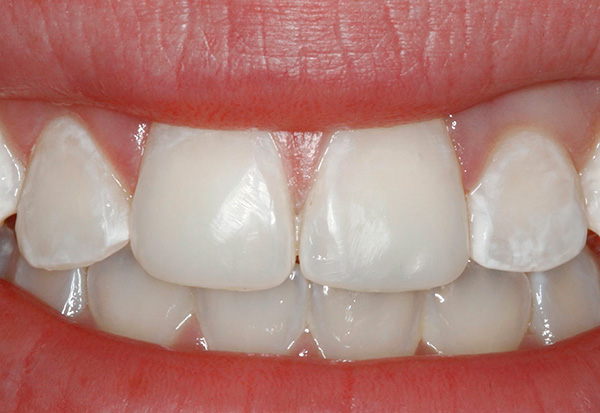
Recognizing the problem in such cases is usually quite simple: the gradual appearance of unusual bright patches of enamel on the tooth over a relatively short period of time (for example, over several weeks or months) clearly indicates a pathological process. Areas of demineralization become especially noticeable if the enamel is slightly dried, for example, standing in front of the mirror and drawing air through the mouth through the teeth.
On a note
Stains on teeth can also appear due to the development of fluorosis in people living in areas where water has a high content of fluoride (the so-called endemic fluorosis). However, today this is a rather rare phenomenon - at least significantly rarer than the appearance of stains on the teeth due to caries.
A more accurate diagnosis of the nature of light spots on tooth enamel is also possible: it is enough to brush the teeth well and then treat them with a 2% aqueous solution of methylene blue dye, washing off the dye with water after 2 minutes. The porous demineralized area of tooth enamel will turn blue in different intensities. If the spot is not related to caries, then it will not acquire a blue color.
In case of suspected caries in the spot stage, it is advisable to visit the dentist and conduct a more accurate diagnosis. In this case, the dentist, most likely, will also use some kind of caries indicator (caries detector), that is, a solution of a chemical dye that can be absorbed by porous demineralized enamel.
The photo below shows how this might look in practice:
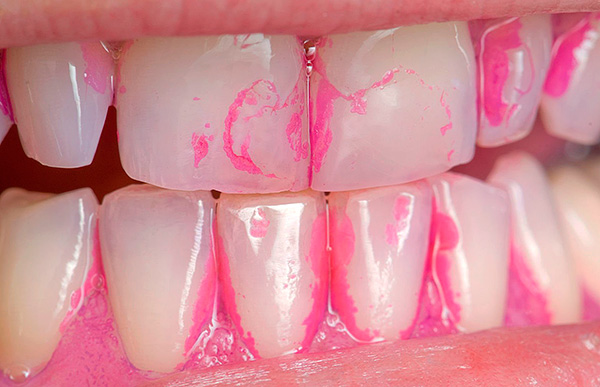
It is interesting
One of the methods for diagnosing superficial caries is stomatoscopy in ultraviolet light. Healthy tooth tissue is manifested by a light green glow, and carious areas look darker. With non-carious damage to the enamel (for example, hypoplasia), the tissue acquires a gray-green glow. However, this technique does not have wide application today, and in clinics they are usually limited to examining the oral cavity and using vital staining methods.
The treatment of caries in the stage of the spot by silvering: is it worth it to agree?
One of the methods of "treatment" of caries in the spot stage is the so-called method of silvering of the teeth, which is used primarily for milk teeth in children. More specifically, this method is positioned, rather, as a method of preventing the further development of the carious process.
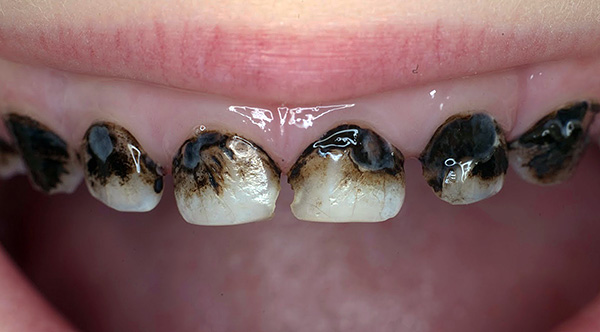
On a note
The silvering method is performed by adults only in exceptional cases (severe mental disorders, inability to withstand prolonged dental procedures), but in general it is used only in pediatric dentistry.
Today, the method of silvering teeth causes a lot of controversy, and many reputable doctors consider this technique a real evil for modern society.
But let's first consider the essence of the procedure and why, in fact, it is carried out: during silvering, a child’s teeth are treated with a concentrated solution of silver nitrate. In the course of a chemical reaction, silver ions are restored in the surface layer of tooth enamel to metallic silver, which is deposited in the smallest pores and is not washed off in the future.
At the same time, it is believed that due to the bactericidal effect of silver, adverse conditions are created for the life of bacteria that cause plaque formation and tooth decay. There are no bacteria, no plaque, no organic acids leading to enamel demineralization - which means that tooth decay does not progress. At least that's how it looks in theory.
In some cases, silvering of teeth is carried out in several stages with repetitions up to 2 times a year. Advantages of the procedure:
- There is no negative reaction of the child, since the teeth are just smeared with something (and not drilled with a terrible drill);
- Teeth can be silver plated, even 1 year old babies;
- Low price, and in public institutions - for free;
- Subject to the indications for the procedure and the accuracy of the technology, caries sometimes really freezes at the existing stage.
However, in practice, situations are not uncommon when silvering does not have practically any effect on the further development of the carious process in a child. As a result, the initial caries safely passes into the middle, and then into the deep.
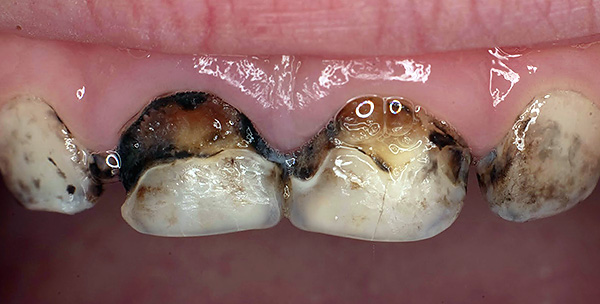
Therefore, the feasibility of treating caries in the stain stage with the silvering method is criticized by many practicing dentists. Cons of the procedure:
- Violation of aesthetics due to a change in the color of the teeth (simply put, the teeth become almost black, as if they are all rotten, although this is only the color of finely divided metallic silver);
- Inability to use with deeper defects;
- Often low or no effectiveness.
Perhaps the main trouble is a very persistent blackening of the teeth after the procedure, which is unacceptable in modern society, because the formation of a child occurs in a team (kindergarten, mugs, sections, clubs). Black teeth and constant ridicule from peers about this can have a lasting adverse psychological effect on the child.
On a note
Sometimes dentists silver their front teeth for babies when it’s not about initial caries. So, the use of silvering with medium and deep caries is even less justified than with the initial.
Deep fluorination and remineralization of enamel
As noted above, the appearance of a white (Cretaceous) spot on the tooth surface is associated with the process of local enamel demineralization. So why not try to return to the enamel the components it lost - calcium, fluorine, phosphorus? ..
It is on this idea that the method of treating caries in the spot stage is based on deep fluorination and remineralization of tooth enamel.
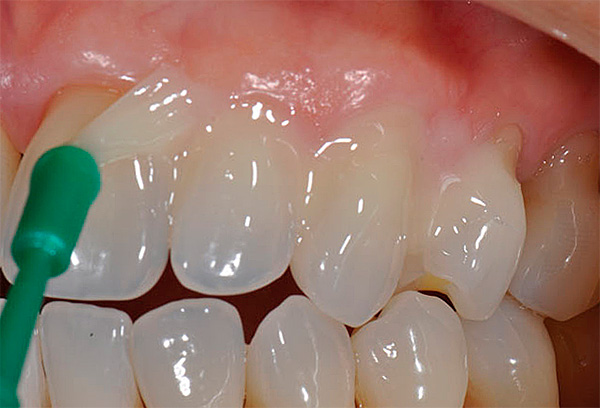
Studies have shown that remineralizing therapy and deep fluoridation indeed often often achieve a positive effect, but only in the case of focal demineralization in the form of a white spot. The pigmented spot cannot be restored to the initial normal state of the enamel structure by similar technologies, although the carious process will be suspended.
Remineralizing therapy means the introduction of calcium, phosphorus and fluoride ions into the enamel structure by means of applications or by electrophoresis (the latter option is more effective). During the procedure, the minerals diffuse (penetrate) into the zones of weakened enamel and restore the areas of the broken crystal lattice.
Deep fluorination is the treatment of tooth enamel with fluorides, due to which the content of chemically very inert fluorapatite, which, in particular, is highly resistant to acids, increases in its structure.
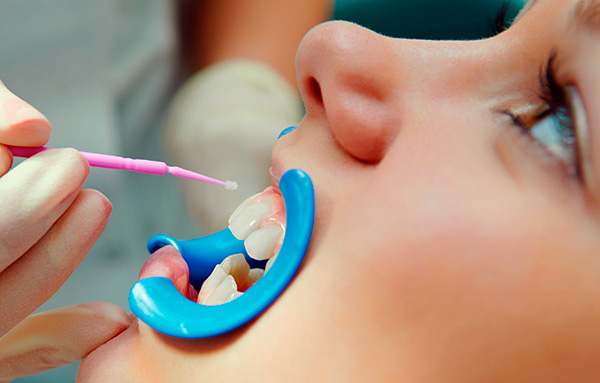
A set of these procedures is prescribed in order to turn the chalk stain on the tooth into a section of healthy enamel with natural transparency and brilliance. Each technique has its own effectiveness and speed of achieving the result - sometimes it can be achieved in 3-4 weeks, and sometimes it is necessary to conduct course applications up to 6 months or more.
On a note
It is really possible to effectively and quickly stop the initial caries using these procedures. But how much time will pass before the natural enamel shine returns is not known in advance, since this is largely determined by the characteristics of a particular clinical situation.
Remineralization of enamel can be carried out not only in the dental office, but also independently, using appropriate means at home (see below).
A few words about home treatments for caries in the spot stage
Before treating caries in the stage of a white spot for a long time at home, it is advisable to consult a dentist - does it really make sense in your situation to do this, or maybe it's time to put a seal on it instead of doing “lotions” on the tooth.
Today, various products are on sale that allow you to gradually saturate the tooth enamel with the mineral components that it has lost. In particular, a noticeable positive effect (especially under the supervision of a dentist) can be obtained using the following drugs:
- ROCS Medical Minerals Remineralizing Gel. It is a source of calcium, phosphorus and magnesium (there are no fluorine compounds in the gel). It is positioned not only as an effective tool for the prevention of caries, but also as a drug that allows you to restore the sheen of enamel during caries in the spot stage. Suitable for use in infants. With a compensated form of caries (that is, when the carious process as a whole can be called slow), the manufacturer recommends a course application - 4 courses of 10-12 procedures per year. ROCS Medical Minerals gel is also indicated when wearing braces (enamel demineralization zones often form around clasps), after a teeth whitening procedure, with enamel hypoplasia and fluorosis;


- Gel dental Elmex. It is also intended for remineralization of decalcified enamel areas, which allows for the effective prevention of caries and the treatment of its initial forms. Unlike ROCS gel, Elmex gel contains fluorine compounds, therefore it is contraindicated in fluorosis. The product is intended for adults and children from 6 years old;

- Amazing White Minerals Remineralizing Gel. By properties and scope it is in many ways similar to Elmex gel, and also contains fluorine compounds.

You can find other remineralizing drugs suitable for domestic use.
The purpose of using these products is to provide an additional influx of mineral components into the surface layers of enamel.
It is interesting
The study of the mechanism of remineralization of tooth enamel began, in fact, about 100 years ago. The first experiments took place on extracted teeth: in particular, it was noticed that the hardness of specially demineralized enamel increased when ordinary saliva was added to the teeth. Later, saliva is recognized as the natural environment that provides the process of mineral restoration of enamel (some dentists figuratively call saliva "liquid enamel").
Treatment options for caries in the spot stage with Icon technology
Let's move on to consider a more effective method of treating caries in the spot stage without using a drill, namely, to consider the technology for treating initial caries by infiltration (Icon technology).
Generally speaking, the principle of treatment is quite simple. First, the dentist cleanses the teeth of plaque and tartar, evaluates the state of the carious process. If there are indications for the use of the procedure, then a special gel based on hydrochloric acid of a small concentration is applied to the dried tooth surface, which dissolves the upper layer of enamel.
The top layer of enamel (the strongest) during caries in the spot stage is only conditionally healthy, since under this “shell” the crystal lattice is noticeably damaged due to the loss of mineral components. After washing off the acid and drying the surface, an infiltrant is introduced, which fills the entire porous structure; then it is polymerized in portions, activating the polymerization process with an ultraviolet lamp. A kind of “seal” obtained is polished with disks and brushes.


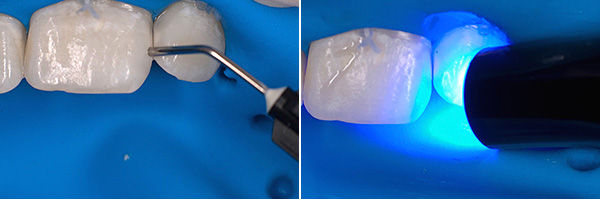
In fact, we have before us an approximate scheme for placing a light-cured filling in one visit, but in this case, not a drill, but hydrochloric acid, as a good solvent for weakened tooth enamel structures, is used as an “eradicator” of carious tissues.
The treatment of caries in the spot stage with the method of infiltration can be used even in children from 3 years of age, which is an excellent alternative in every sense to the hopelessly outdated method of silvering teeth.
However, the possibilities of Icon technology, unfortunately, are not unlimited.For example, in the case of dentin exposure, as well as with too thin enamel (for example, in the cervical zone), or in the presence of an already formed carious cavity, this method will be unsuitable. Icon technology has a positive effect only on the outer layers of enamel, that is, its therapeutic effect is aimed specifically at caries in the stain stage.
Be that as it may, Icon at the moment remains a popular, modern and quite effective way to treat caries in children and adults at the initial stage of carious destruction of tooth tissues.
Feedback
“My daughter and I are each time winding to Moscow, doing deep fluoridation. I don’t know how much more to torture the baby. I want to do ICON already, in our clinics we have not even heard about this, they just drill it. In one clinic they heard, but do not even plan to introduce. In short, it’s tight with us ... "
Ekaterina, Izhevsk
Treatment of initial caries with filling (restoration)
As mentioned above, a dark (pigmented) carious spot on a tooth, in contrast to a white (matte) one, often cannot be turned into a normal state with the help of a remineralization procedure alone. The Icon system, too, may not be shown in all cases, and by no means is available in all cities.
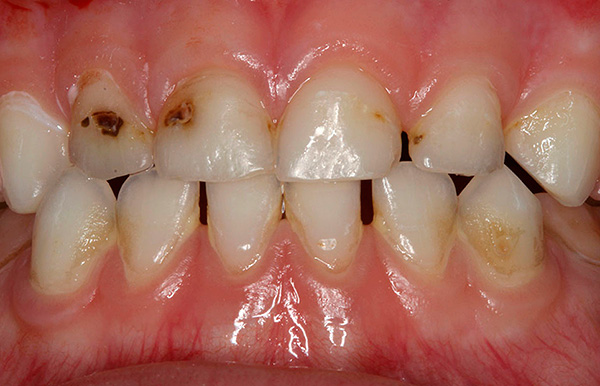
As a result, grinding and subsequent filling of a carious spot can be a good alternative, which today is the most accessible to the general population.
Depending on the clinical situation, the dentist may not even use boron, limiting itself to special disks, or grinding and polishing heads. And even if the preparation of the enamel section with a carious spot is carried out using boron, the processing time can be insignificant, as well as the depth of the defect formed.
After cleansing the tooth from carious tissues, filling material is applied to the prepared area.
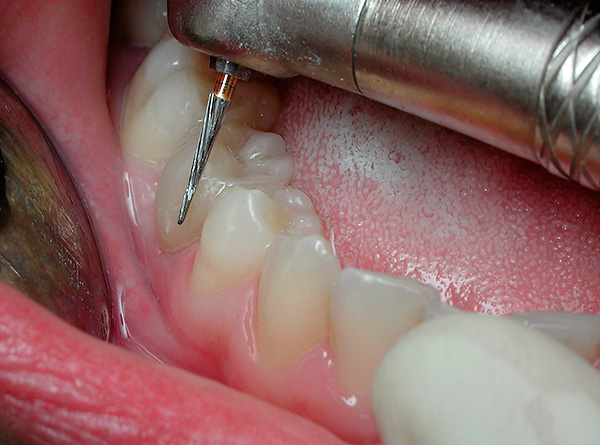
The choice of material usually remains with the attending physician (although the patient also takes part in some clinics, especially when the cost of a filling from different materials varies significantly). Light-curing filling materials are best suited for anterior tooth groups.
Feedback
“I came to the city polyclinic a week ago so that the black stain on the tooth was removed. So I told the doctor, polish the caries, please. I don’t know what the hell they are doing there, but only she did it the way she didn’t. Grinded without an injection, it hurt. He says, like you did, you can go home. It’s free, it’s free, the stain has disappeared, but the surface of the tooth began to look like pokotsenno, and the reaction from the cold appeared. I went to a private clinic, where they finished everything neatly for me. They put a tiny filling on the tooth, polished it, covered it with some kind of varnish, the tooth passed right away. In general, in free dentistry, do not rush with phrases such as tear my tooth out, grind caries, otherwise they will do it at the request of the working people, and not as it should be. ”
Max, Zvenigorod
Modern orthopedic methods to restore the aesthetics of teeth affected by caries
If everything is clear regarding the placement of the fillings on the tooth (they processed the carious part of the enamel - put a seal), then about the orthopedic methods to restore the aesthetics of teeth with caries in the spot stage, an unprepared reader may have serious doubts and quite reasonable questions.
For example, this: is it really necessary to grind teeth, put crowns or otherwise prosthetically for the sake of a caries spot?
Of course, this is not about crowns at all. Today, ceramic veneers and lumineers are becoming very popular. Veneers are, in fact, porcelain lining plates on the visible part of the tooth, allowing you to adjust the shape and color of the tooth, as well as provide a protective effect.
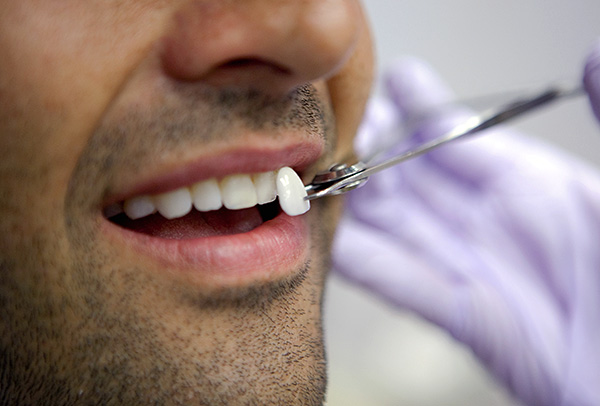
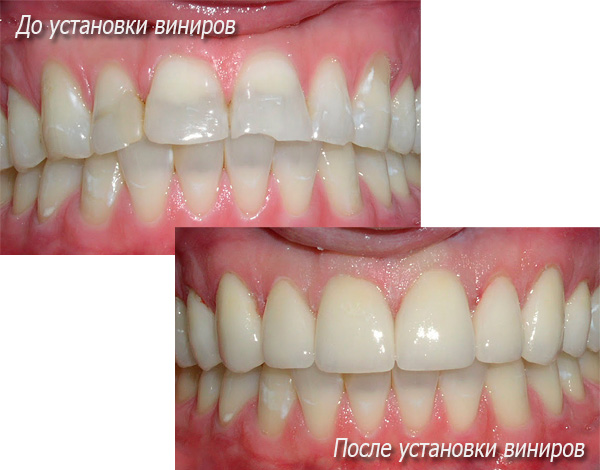
Lumineers, unlike veneers, are so thin that they are fixed without first turning the tooth, or with minimal grinding.
On a note
High aesthetics, strength and durability of veneers and lumineers allow them to gain more and more popularity among the people. Indeed, in a number of clinical cases, such overlays with a relatively small expenditure of time and money allow you to get almost a Hollywood smile with initially very mediocre teeth.
However, in the context of our topic, this technique should be considered more critically. In particular, because of one or two pigmented spots with the normal shape, color and position of the front teeth, the appropriateness of installing veneers is doubtful: it is enough to do with Icon technology or filling. Therefore, do not rush without the compelling need to grind your teeth under the veneers, no matter how attractive the pictures in the advertisement seem to you.
If you have personal experience in treating initial caries, be sure to share the information by leaving a review at the bottom of this page (in the comments box). Perhaps someone will help the information to make the right decision in a similar situation.
Useful video: how to stop caries in the stage of a white spot - dentist's advice
Treatment of initial caries without a drill using Icon technology

